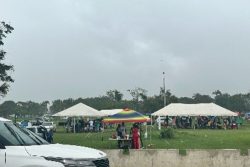By Roxanne Clarke
With photos by Anjuli Persaud
Den Amstel lies about seven miles from Vreed-en-Hoop, sandwiched between Blankenburg to the east, and Hague to the west. The village is sited on what was once a plantation of the same name. A Dutch planter called his estate Den Amstel, after the river which flows through the city of Amsterdam in the Netherlands, from which he presumably came.
The population of the village comprises approximately three thousand people of mostly African descent. The area is divided into three sections: Den Amstel Sea View, Den Amstel Housing Scheme and Den Amstel Old Road. The old road was the main means of access to the village in earlier days; however, in the year 1974, the main West Coast Demerara Highway was constructed displacing the old road as the primary route into the community.
Overseer George Nedd has been the area’s administrator for the past five years. He calls special meetings among the residents and according to residents has made significant contributions towards the development of the area. He is also seen as the main organizer of fund-raising activities in aid of the development of the community’s cherished heritage area.
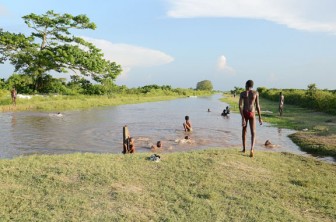 Recounting his life in the village, Errol Hilliman 57, who said that his great great great-grandfather was the planter John Craig, told Sunday Stabroek: “I enjoyed living here because first of all it is a place that you can have a very simple life and don’t have to worry about what people say. Here you do your little kitchen garden, rear your poultry and just do whatever little – even if it is having a small business just to make a living.”
Recounting his life in the village, Errol Hilliman 57, who said that his great great great-grandfather was the planter John Craig, told Sunday Stabroek: “I enjoyed living here because first of all it is a place that you can have a very simple life and don’t have to worry about what people say. Here you do your little kitchen garden, rear your poultry and just do whatever little – even if it is having a small business just to make a living.”
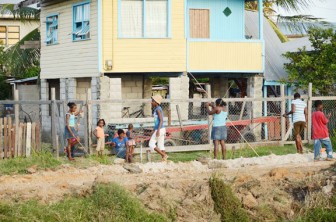
Hilliman remembered catching the train to Vreed-en-Hoop in the early days, where he caught the ferry to attend the Technical Institute in Georgetown.
Rice-farming, cattle-rearing and horticulture are some of the main economic activities of residents. There are also many small businesses located throughout the community, most of which are family concerns. They include meat centres, grocery stores, small ice-cream parlours, hair-dressing salons, a

clothes shop and a bakery which caters for weddings and parties. There is also a post office in the village.
Catering to residents’ spiritual needs are the two churches in the community, the Ebenezer Congregational church established in 1956, and the Pentecostal church.
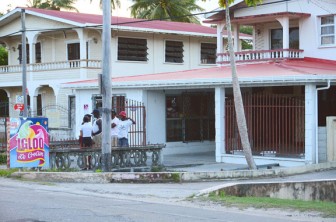
Where education is concerned, Den Amstel has a day-care facility for children, a nursery school and a primary school; the nearest secondary school is at Leonora. There is, in addition, the private Murray Business Institute and an information technology centre. A large playground for recreation purposes is named after Hurisilla Forbes, a centenarian, who is well known in the community. She is the grand-daughter of Hackney Hilliman, a famous son of
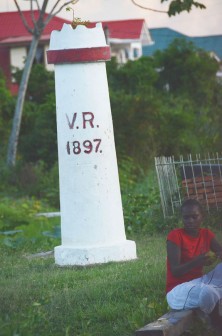
Den Amstel who in the nineteenth century purchased a large plot of land which was passed on to his descendants.
Residents told this newspaper that the area is filled with fruit trees such as mangoes, coconuts, cherries, tamarind, pineapples, etc. “Girl, people living here take advantage of the many coconut trees by simply stripping the branches of the plant then parcel them off to be made into broom which is sold at a reasonable price.“ She further explained that the fruits which are grown in the area are sold in nearby markets. “I have me shop and like most of the people I sell pickle mangoes and even tamarind syrup.”
Most of the people living in the community described the area as being fairly quiet and relatively free of crime and violence. On the weekends, the children have their fun time in the nearby canal or simply by playing cricket. During the evenings the Turning Point Snackette and Beer Garden, a famous spot, is usually filled with villagers, who
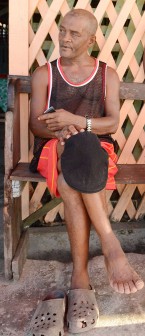
can be seen sipping their favourite beverage as they relax to the music played by some of the young DJ’s in the community.
Two of the oldest landmarks at Den Amstel are the ‘cork tree‘ which according to residents is almost 200 years old, and the 1897 monument carrying the initials VR, which they said stood for QueenVictoria (Victoria Regina).
A regular day of work for most of the residents begins at 6 am every day. A man who has been living in the area for the past 30 years explained, “We like to get our house chores done early in the morning before the sun get very hot… To me it is just a tradition of the people living here.”
In the afternoons the women or the children can be seen watering their kitchen gardens and flower plants. According to residents, many of the families in the area are single parents with the responsibility of providing for the home.
Aback of the community is a large rice plantation of over 400 acres, which employs some of the residents. There is also a large pasture which was first
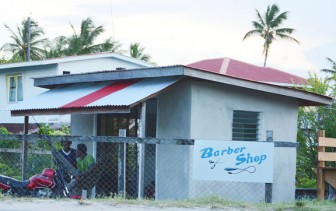
called the ‘Jamoon Berry Pasture’ because of the many jamoon trees on the embankment around it.
On the down side, residents complained about poor drainage and bad roads throughout the community. Some of the villagers also expressed their disgust about the poor garbage disposal service in the area.
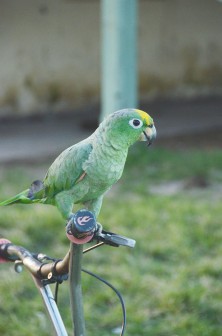
Residents insisted that theirs was a community of moral values. According to one resident, “Like some place you can’t even talk to children, but here children have great respect for adults.” She also related that one of the reasons which makes the community different from other areas on the West Coast of Demerara is that the people live as one, and have a great togetherness. “Here everybody is one… if you trouble or hurt one person is like if you are hurting the entire village,” she said.









